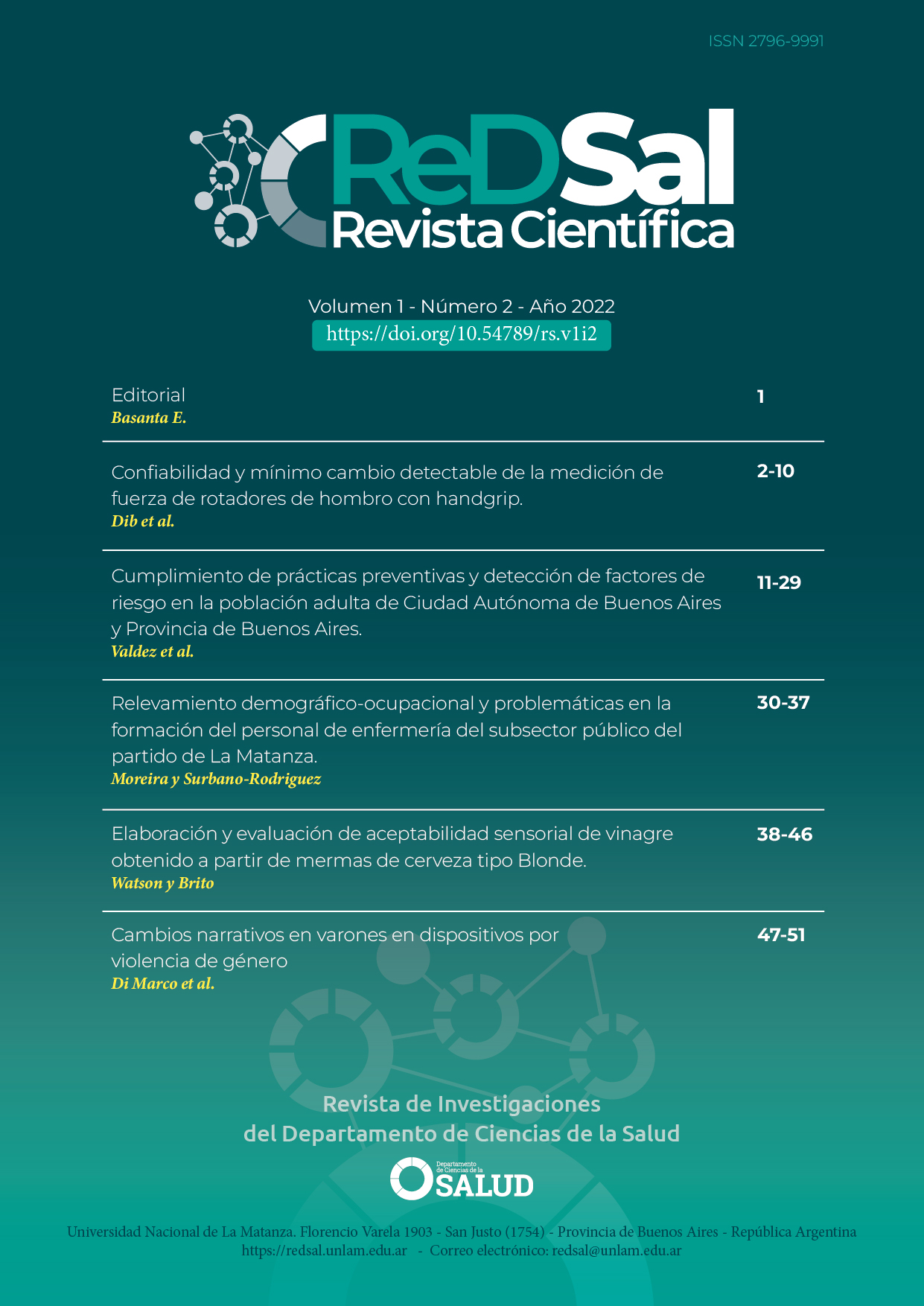Narrative change in men in institutions due to gender-based violence
DOI:
https://doi.org/10.54789/rs.v1i2.14Keywords:
gender-based violence, intimate partner violence, personal narrative, therapeutics, hermeneutics, ArgentinaAbstract
The aim of this paper is to analyze the narrative change of men who have performed gender-based violence, through their transit in violent men programs. A sample of 28 narrative interviews with men (in different institutional stages) was analyzed thematically. The incorporation of new discursive frameworks, and the passage from a victim-blaming discourse to one of self-blame and/or blaming of the context stand out.
References
Dobash RE, Dobash R. When men murder women. Journal of Chemical Information and Modeling. Oxford: Oxford University Press; 2015.
Presser L. Why we harm. New Jersey: Rutgers University Press; 2013. 160 p.
Segato R. Las estructuras elementales de la violencia. Ensayos sobe género entre la antropología, el psicoanálisis y los derechos humanos. Quilmes: Universidad Nacional de Quilmes; 2003. 264 p.
Braun V, Clarke V. Using thematic analysis in psychology. Qual Res Psychol. 2006;3(2):77–101.
Dobash RE, Dobash R. When women are murdered. In: The handbook of homicide. Chichester: Wiley Blackwell; 2017. p. 131–48.
Hearn J. The violences of men: How men talk about and how agencies respond to men’s violence to women. Londres: SAGE Publications Ltd; 1998.
Kimmel M. Targeting women. In: Angry white men American masculinity at the end of an era. Nueva York: Bold Type Books; 2019. p. 169–98.
Maruna S. Making good: How ex-convicts reform and rebuild their lives. Washington D.C.: American Psychological Association; 2001.
Meccia E. Biografías y sociedad. Métodos y perspectivas. Santa Fe: Ediciones UNL; 2019. 556 p.
Cid J, Martí J. Turning points and returning points: Understanding the role of family ties in the process of desistance. Eur J Criminol [Internet]. 2012;9(6):603–20. Available from: https://doi.org/10.1177/1477370812453102
Manchado M. “La salvación es personal”. Desistimiento, religión y narrativas de conversión en prisiones de Santa Fe (Argentina). URVIO, Revista Latinoamericana de Estudios de Seguridad [Internet]. 2021 [cited 2021 Feb 1];(29):59–77. Available from: https://revistas.flacsoandes.edu.ec/urvio/article/view/4401/3593
Rosenthal G. Biographical research and case reconstruction. In: Interpretive social research - an introduction. Göttingen: Universitätsverlag Göttingen; 2018. p. 155–89.
Becker H. Outsiders. Hacia una sociología de la desviación. Buenos Aires: Siglo XXI Editores; 2009.

Downloads
Published
How to Cite
Issue
Section
License
Copyright (c) 2022 ReDSal

This work is licensed under a Creative Commons Attribution 4.0 International License.








